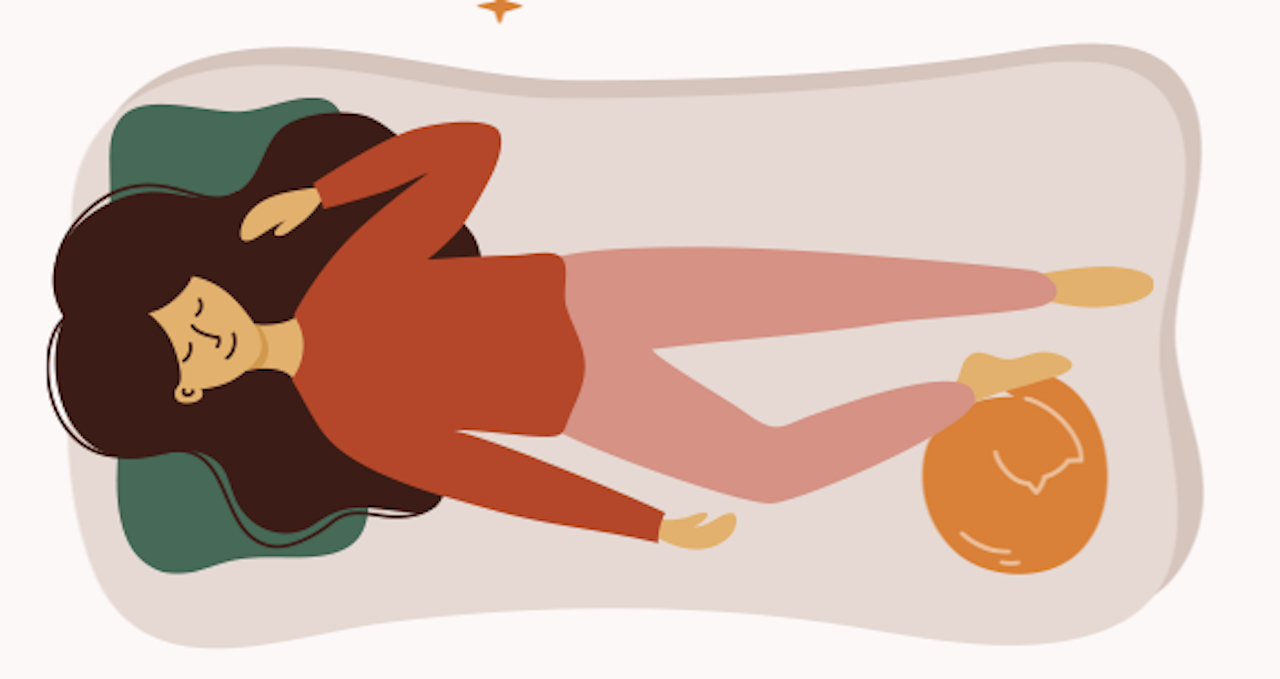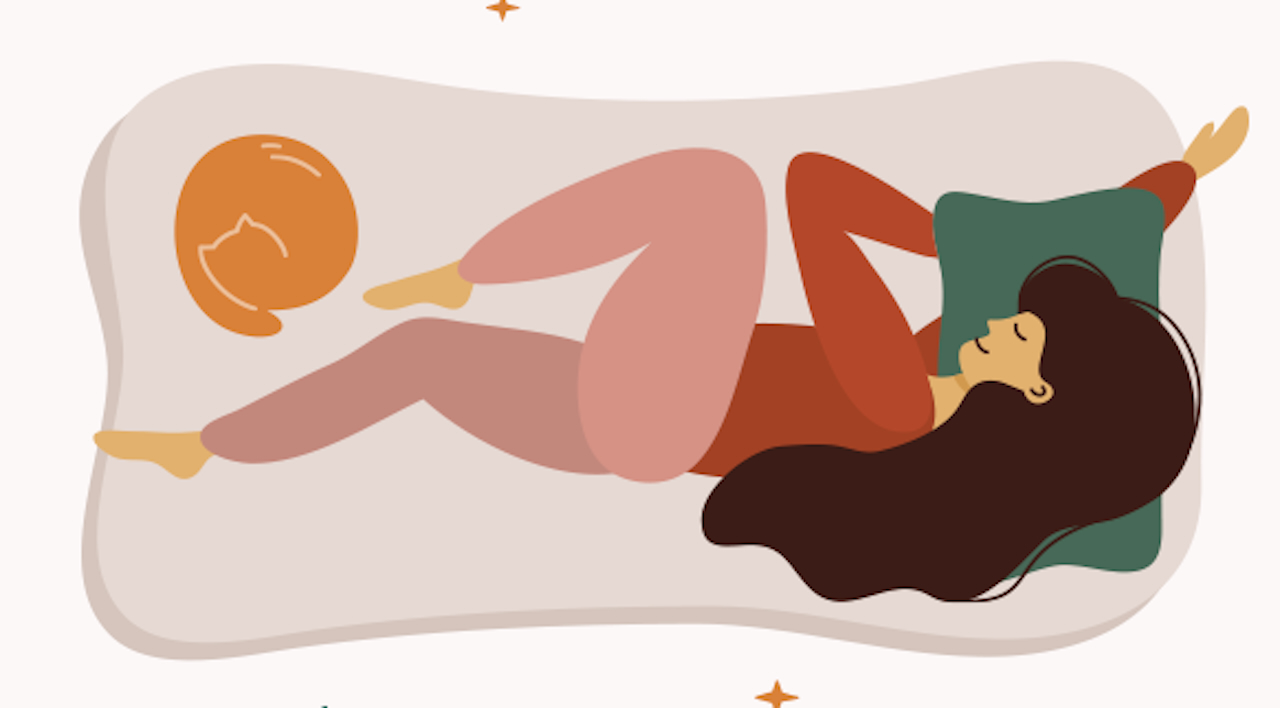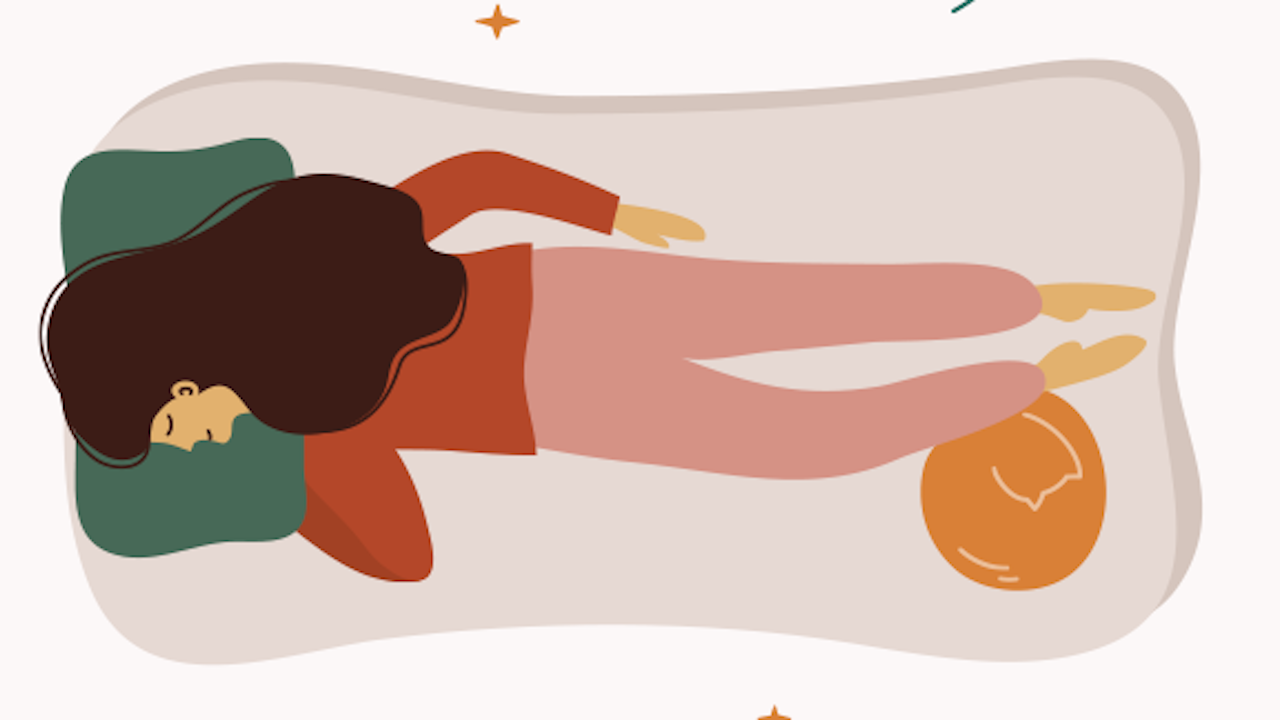Mattress Construction
February 2024How many pillows should you sleep with?
Determining the ideal number of pillows for sleep can be tricky, especially if you’ve been struggling to sleep and swapping pillows almost every night. The number of pillows does vary from person to person, but there are some rules based on sleeping positions and comfort needs that can help you banish the restless night’s sleep by choosing the right type and number of pillows.

Did you know that the average number of pillows that the majority of people sleep on is just one? According to the National Sleep Foundation (NSF) 2015 Sleep in America Poll, the average number of pillows used by American adults ranged from one to two pillows. The survey found that 47% of respondents reported using one pillow, while 35% used two pillows.
However, there is more to the old question of ‘how many pillows to sleep on‘ than just a survey; it’s actually rooted in more science than mere guesswork. Here’s our expert detailed pillow guide to help you find the right number for a comfortable night’s rest.
1. Consider Your Sleeping Position
Your sleeping position is the biggest deciding factor in the type of pillow you choose to sleep on and how many you need to be comfortable during the night. By understanding your main sleeping position, the one you favour for most of the night, you can quickly help narrow down your pillow requirements. Let’s dive in and see what your sleeping position suggests for you pillow-wise!
Back Sleeper Pillows
Back sleepers typically benefit from using one pillow to support the natural curvature of the neck and maintain proper alignment with the spine. Usually, this is a deep, firm pillow such as a latex or memory foam pillow, which holds your head in one position and doesn’t need too much ‘fluffing’ during the night; we’re talking about your feather pillow!
Side Sleeper Pillows
Side sleepers may find it more comfortable to use two pillows—one to support the head and another to align the spine with the neck. This is because side sleepers place more pressure on the mattress and pillow during the night via the shoulders, hips and the side of the head. Side sleepers usually need a slightly softer mattress, and the same for pillows. Softer pillows, such as feather and down pillows, provide more of a deep sink for side sleepers.
Stomach Sleeper Pillows
Stomach sleepers should ideally use a thin pillow or no pillow to prevent strain on the neck and maintain spinal alignment. This is because stomach sleepers need a firmer mattress to stop them from sinking too far into the mattress and moving their spine out of alignment. So, for pillow choices, a soft polyester pillow or down pillow is best.
2. Assess Your Pillow Comfort Preferences
This is the aspect of choosing pillows that is very subjective. Some sleepers love a super soft, squishy, and high loft pillow. The type of marshmallow pillow that envelopes your head. Other sleepers love a dense, firm pillow that your sleepy head hardly makes a dent into!
When choosing the right pillow, there are two main areas to understand
i) Firmness
Some sleepers prefer softer pillows for a plush feel, while others prefer firmer pillows for added support. The firmness is achieved by the density of the materials, such as how much polyester is in the pillow, the firmness of the memory foam or density of the latex used. Take care to look at the technical details of each pillow and whether it is listed as soft, medium or firm.
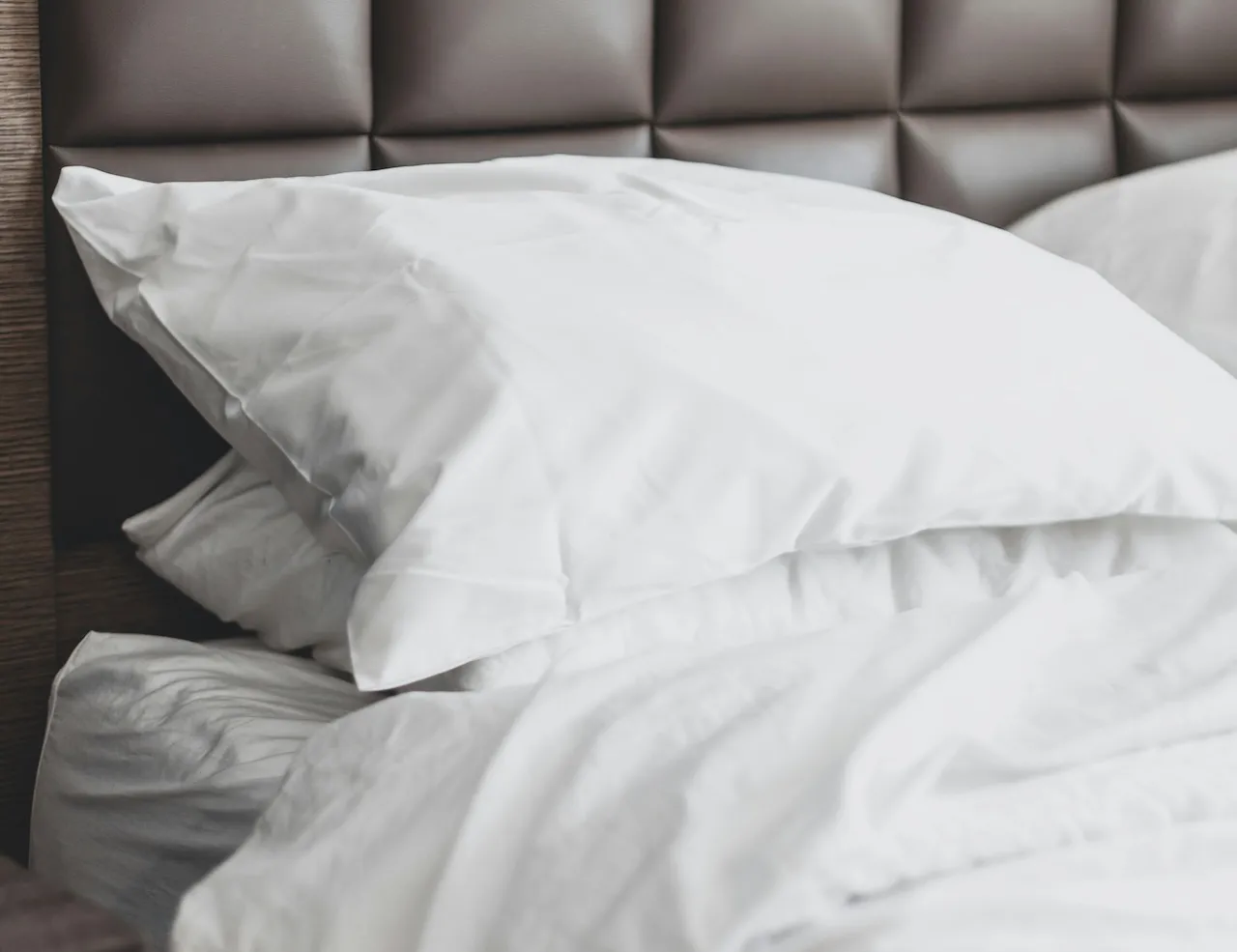
ii Loft
Pillow loft, or thickness, is another important factor to consider to get the perfect night’s sleep. Higher loft pillows provide more support, while lower loft pillows may be more suitable for individuals who prefer a flatter sleeping surface. Many pillow companies ignore loft and just focus on firmness, but it’s an essential detail to understand.
Feather pillows, for example, have the highest loft, whereas latex and memory foam have the lowest.
| Pillow Type | Firmness | Cost |
|---|---|---|
| Polyester | Soft to Medium | Low |
| Foam | Medium to firm | Low |
| Down | Soft to Medium | Midpoint |
| Feather | Soft | High |
| Memory foam | Firm | High |
| Latex | Firm | High |
3. Check your mattress support
If you’re struggling to sleep with what feels like an endless conveyor belt of pillows, then it actually might be your mattress that is keeping you awake at night. Remembering that the pillow is only one part of your sleep toolkit!
To optimize your sleep, choose a mattress that provides proper support and alignment, considering body weight and sleeping position. High-quality mattresses with natural fibres and breathable fabric regulate body temperature and prevent discomfort, which can help you sleep better while supporting your sleep position.
Mattress Health Checklist
- Choose a mattress that offers adequate support and promotes proper spine and body alignment.
- Consider body weight and sleeping position when selecting a mattress.
- Invest in high-quality mattresses with natural fibres, which create a breathable sleep surface.
- Opt for mattresses that regulate body temperature and wick away moisture.
- Upholstery layers on top of the mattress provide tension, not the spring.
- The type of fibres used in the mattress can determine the comfort level, ranging from soft to medium or firmer feel.
- Spring tension does not determine mattress firmness; the upholstery layers on top do.
4. Experiment with Pillow Arrangements
We’ve discussed how, for most people, sleeping with one main pillow is best, based on research, but we haven’t covered pillows for other uses to support hips, legs and lower backs!
Test different pillow configurations to find what works best for you. You may prefer using one large pillow for the head and neck or a combination of smaller pillows for added support and comfort under your knees, hips or shoulders if you struggle with aches and pains during the night.
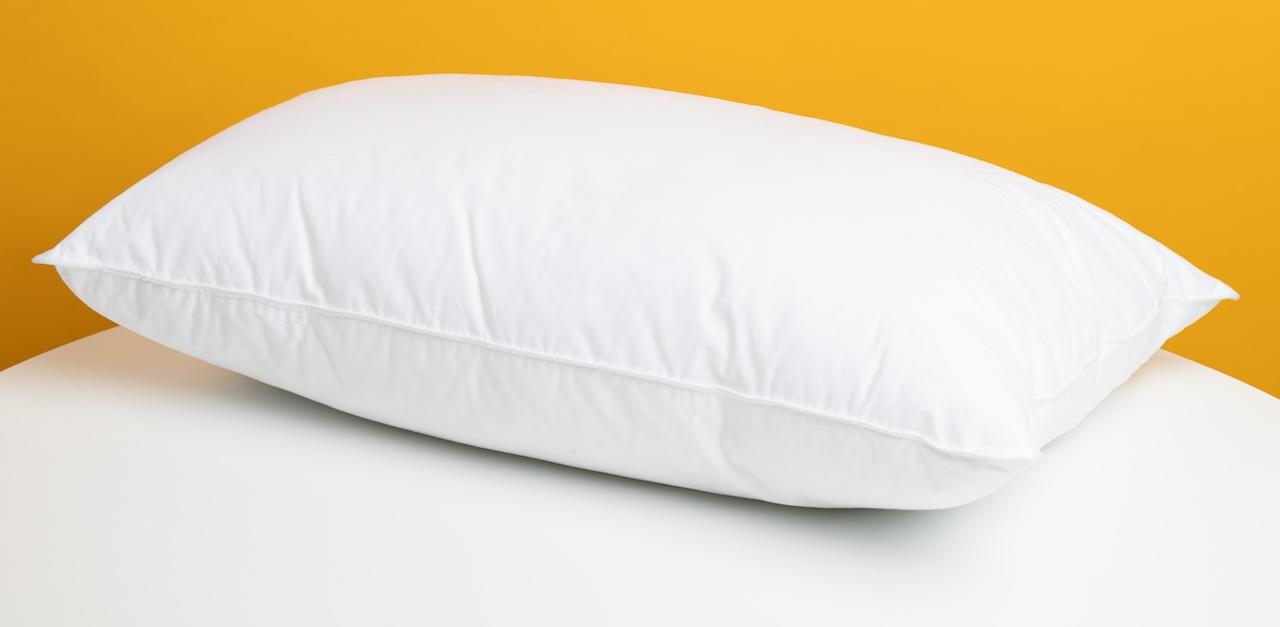
Explore speciality pillows, such as body or wedge pillows, to address specific sleep concerns or conditions. Pay attention to how your body feels with different pillow arrangements and adjust as needed. Your comfort and sleep quality should be the ultimate determining factors in selecting the right number of pillows.
Remember, it’s not just your head that can benefit from a pillow!
5. Invest in Quality Pillows
Choose pillows made from high-quality materials, such as goose feathers or 100% natural latex, that offer adequate support and durability. Look for pillows with hypoallergenic or breathable covers to promote airflow and reduce the risk of allergies or irritation.
As a rule of thumb, natural fibre pillows and covers are far better and last longer than man-made polyester pillows and synthetic covers. If you have already invested in a natural fibre mattress, then it makes no sense to add cheap pillows to the mix. These cheaper synthetic pillows are more likely to lose their loft quickly, make your head sweat and need replacing far more often than quality natural fibre pillows.
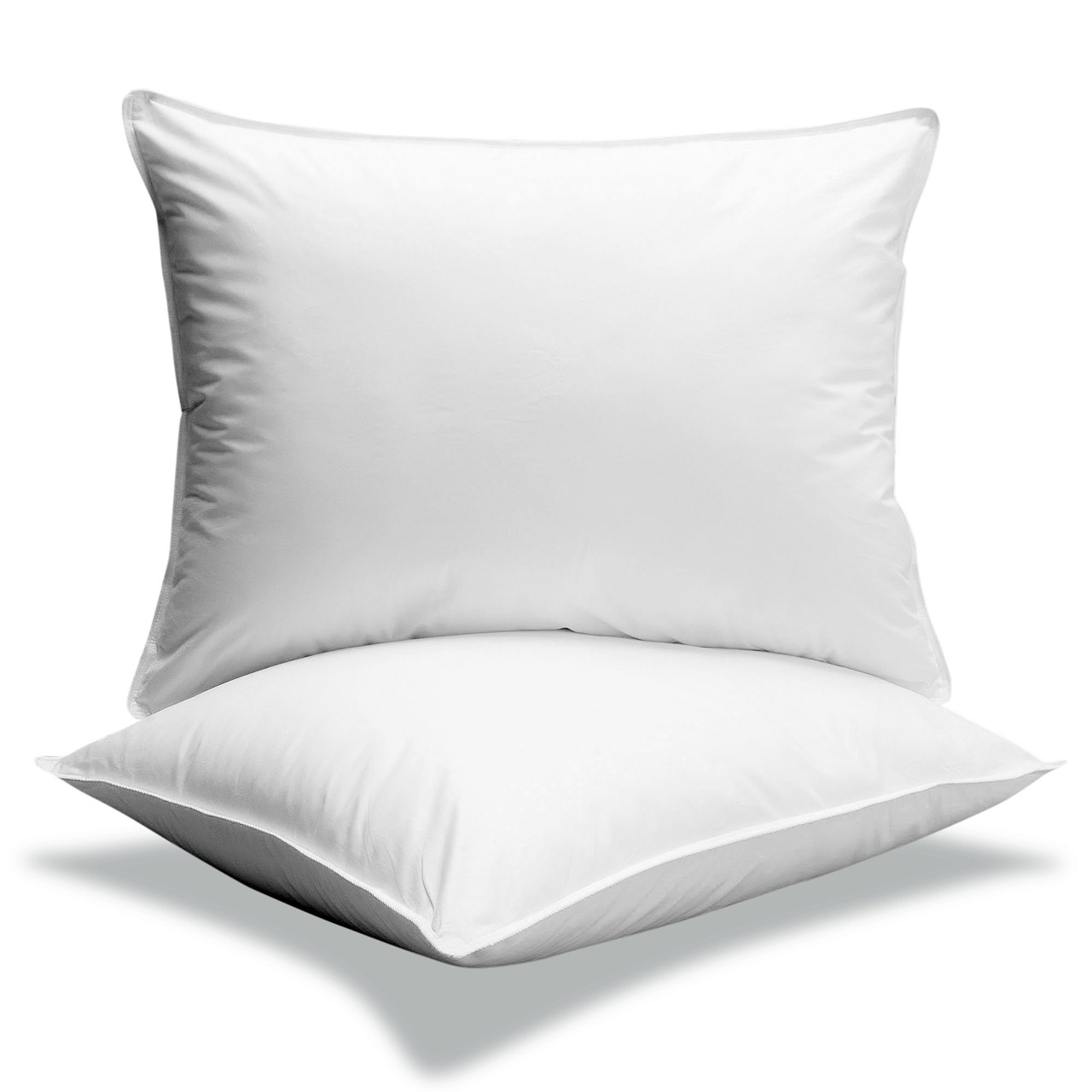
Keep your pillows clean by using pillow protectors and replace them as needed to maintain hygiene and support. Pillows lose their shape and support over time, so replacing them every 1-2 years is important, depending on the pillow type and usage. Super high end latex pillows can last as long as 10 years and are a worthy investment, the same goes for goose or duck feather pillows vs polyester ones.
Summary
Although the research suggests that sleeping with one pillow is optimal for most people, the ideal number of pillows for sleep is a personal preference that should be tailored to your individual comfort needs and sleeping habits.
Experiment with different pillow arrangements and configurations until you find what works best for you, and prioritize comfort and support for a restful night’s sleep. Remember to opt for quality vs quantity so that your pillows last and help support you during the night based on your sleep position.
If you still struggle to sleep, contact our small expert mattress team to assist. We can help compare any mattress models you may be looking at and provide additional reassurance and guidance.
You can call us at 0161 437 4419 or drop us a line using the mattress contact form below.
Sleep well!

Dreaming of the perfect nights sleep?

Ask us a question
There are over 6000 questions and answers submitted by you on all questions about mattresses and bed problems. Enter a keyword such as Vi Spring, John Lewis beds, bad back or Memory Foam and see if your question has already been answered.
If you can’t find an answer in knowledge hub, ask a new question. We aim to respond to all questions within one working day.
Newsletter
Enter your email to join our newsletter. We’ll send you occasional news and mattress expertise.

